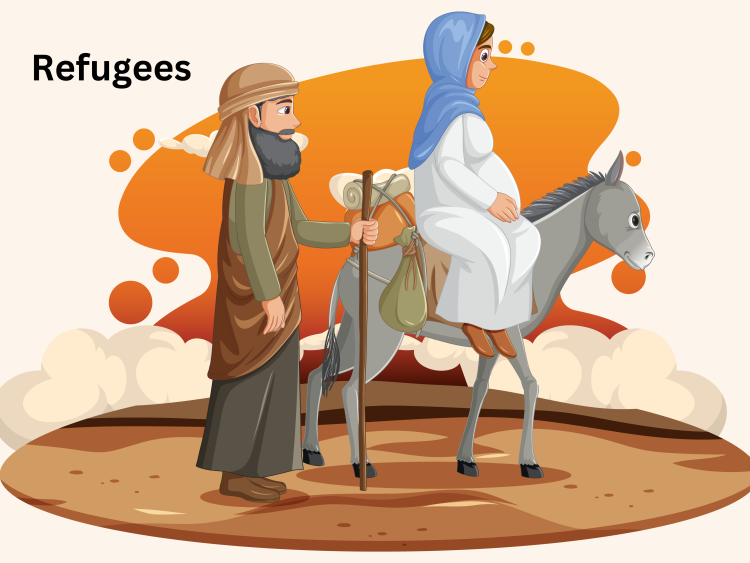Celebrations & Core Beliefs
In the north, meteorologists have added “wind chill” to their weather reports. They elongate their updates with “the temperature feels like” and “polar winds” coming in from Canada, as they sweep their hands over huge maps that change colors with swishes of curved lines denoting incoming blizzards. Some folks gleefully head for skis, snowmobiles, skates, and snowboards. Lately, I’m more inclined toward my fuzzy sweatpants and think about baking something to enhance the inside temperatures.
To the south of the equator, others are awaiting spring flowers and prepare for a Christmas at the beach. Either way, we are all soon to experience a pagan solstice celebration followed by religious traditions of a variety of historical foundations. From earliest times, humans have looked to the heavens and their surroundings, forming ideas of creation and a Creator. I find the varieties of beliefs and celebrations fascinating. I am personally grateful that mid-winter has a collection of rituals that take my mind off of the weather and into a flurry of activities centered on goodness and hope, as well as baking and sending out cards.
As children, we are handed the beliefs and rituals of our parents, traditions they gleaned from their parents, and so it goes. Mobility over the past generation has broaden our travel to other countries, our job opportunities, and the likelihood that family is spread to far flung places on the globe. Maybe cutting a pine tree for Christmas is no longer possible. Maybe “the lips that touch wine will never touch mine” find themselves in an “eggnog + rum” family.
 Over time and travel, my beliefs and behaviors have morphed according to the company I keep and the new options I discovered. As a college student in Spain, I experienced chestnuts roasting on an open fire… in barrels on street corners. I was sent out to buy enough grapes so that everyone at the party would have twelve at midnight on New Year’s Eve.
Over time and travel, my beliefs and behaviors have morphed according to the company I keep and the new options I discovered. As a college student in Spain, I experienced chestnuts roasting on an open fire… in barrels on street corners. I was sent out to buy enough grapes so that everyone at the party would have twelve at midnight on New Year’s Eve.
Check out Chapter 12 in my book Northern Shores/Southern Borders for details plus my embarrassing revelation after fearing a tall, dark, tunic clad man in the department store where I was Christmas shopping. So much to learn from culture! As to the midnight grapes, my friends and I thought it only fair to teach our Spaniard hosts about mistletoe.
Spain and the Americas have similar, yet different, ways of interpreting their religious celebrations. The Americas include rich swaths of indigenous influence. Re-enactments of stories in Latin America bring reality to ancient tales, such as the Posada parades between homes. Spreading the Christmas story from December 12 to January 6 follows the Biblical account of Mary and Joseph’s journey, pre-Bethlehem to the arrival of the Three Kings. They even have a “Fool’s Day” blended in on December 28, when the Magi “fooled” King Herod about Baby Jesus’ whereabouts. Each country and even each family, takes these stories and creates their own rendition of these commemorations.
Personally, I’ve added grapes on New Year’s Eve, Abuelita hot chocolate and listening to villancicos, Spanish carols. The music is upbeat and the lyrics add a very human element to the story. Instead of translation from Silent Night to Noche de Paz, we get Los Peces en el Rio where Mary is washing the baby’s diapers in the river – a human chore.
Regardless if you leave a plate of cookies out for Santa or straw out for the camels, there is the origin story and its many messages. What are the core beliefs of this celebration?
Let’s remember that Mary, Joseph, and Jesus were seeking shelter. They soon had to flee, becoming refugees due to King Herod and his thirst for power and fears of being taken over.
Let’s remember the messages of taking care of the widow, the orphan, and the foreigner. . .
Let’s remember the Golden Rule – also a commandment: “Do onto others…”
What messages are getting traction? What traditions do we practice? What do our actions reveal about our beliefs? Or, how do our beliefs manifest into actions?
Let’s pay attention to what is happening to María, José y Jesús in our historic time.
Winter. A time of darkness. Darkness dissipates in the presence of a single candle.
Let your light shine.
Villancicos:
In the villancico: Los Peces en el Rio, La Virgen María is on the banks of a river washing the baby Jesus’ diapers… Fish jump (for joy?) and angels sing as she scrubs. When she hangs the clothing on a bush to dry, it miraculously bursts into blooms. Kid version first:
As sung by Mexico’s Grupo Pandora:
And, you? Which music fills your celebratory memories? What ritual do you want to pass along? Do have a “pickle hidden in your tree” sort of tradition? That, I discovered, is a German tradition… in some families!

